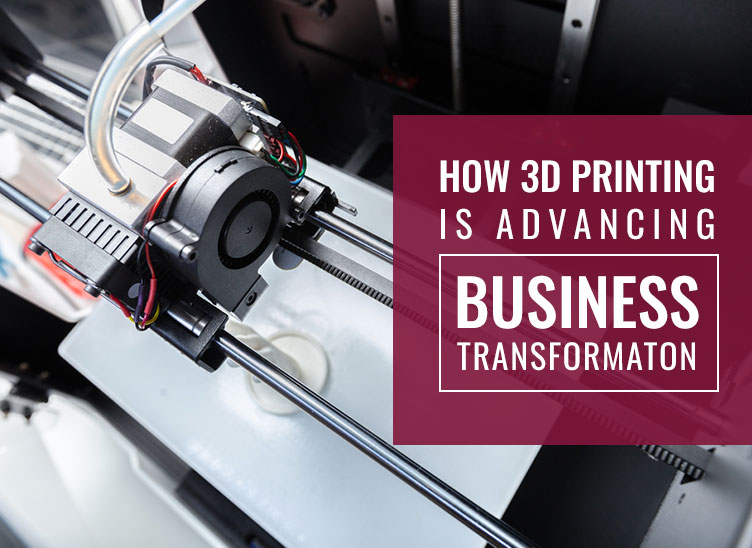
How 3D Printing is Advancing Business Transformation
Additive manufacturing or 3D printing is no longer a distant technology, becoming more mainstream all the time. This printing uses specialized equipment to create a physical object from a digital model and processes that bond and mold materials together. The two main components that set this type of manufacturing apart.
- Deposit Process: layers of raw materials are added a layer at a time then fused together.
- Materials Used: metallic powders, polymers, and other solids, along with some liquids such as photosensitive resin, and ribbons and wires for any semi-finished products.
The main benefit of 3D printing is that any shape can be created because of the freeform designing abilities. It takes fewer tools, less time, and produces less waste. Comparing this type of manufacturing with the more traditional process, it makes a lot of sense for companies to consider switching their machinery.
The Benefits of Manufacturing with 3D Printing
While many industries have already implemented 3D printing in some areas like energy, transportation, and consumer goods, it is currently entering cutting edge fields such as aeronautics, space, and medical manufacturing. This process really shines in areas where there are custom, unique pieces required. More industries are turning their eyes toward this manufacturing because of three main benefits; cost, creativity, and environmental benefits.
Cost. While the initial cost of replacing current equipment is a concern for many companies, 3D printing can cut costs over the long term. The traditional form of manufacturing requires creating multiple prototypes to work out problems, then working in small-series parts to put the entire thing together. Companies often keep spare parts on hand with all the extra materials to save costs, but that requires storage. With additive manufacturing, production steps are skipped, less tooling and materials are used, and time is saved overall. Cutting costs and increasing production times means that companies can make more money.
Creativity. Since 3D printing gives more flexibility, manufacturing companies have more creative license with their products. With previous technological limitations, creating complex shapes or objects would take a lot of time and extra materials to figure out. When raw materials are added in, rather than cut out, they are layered using sub-systems. It’s also easier to switch or add new materials quickly during the manufacturing process.
Environmental Benefits. Switching from mass production to customization gives more flexible steps and improve capabilities. As mentioned before, fewer materials are used when added instead of cut from a solid block of material, which creates less waste. With faster production times, less energy is used and lowers the carbon emissions put out by the company.
While these three benefits have convinced many manufacturing companies to make the switch, 3D printing also builds a larger network of suppliers and distributors. When they work together, they can share materials to create less waste and optimize their costs. Another big benefit to collaboration is that customers are placed at the forefront with a more service-oriented approach to production. Customers have more input and take part in more of the creative process, approving and designing along with the manufacturers. With 3D printing, the sky is the limit.
